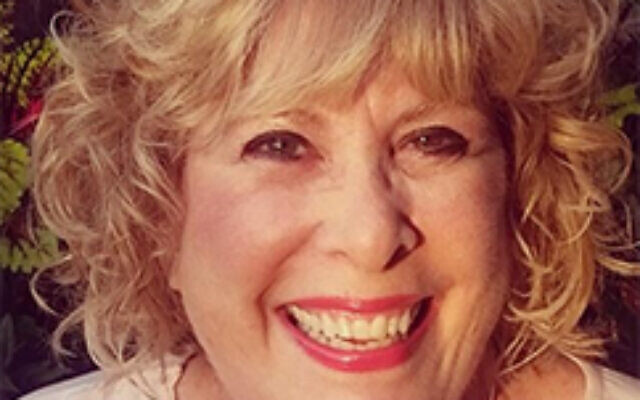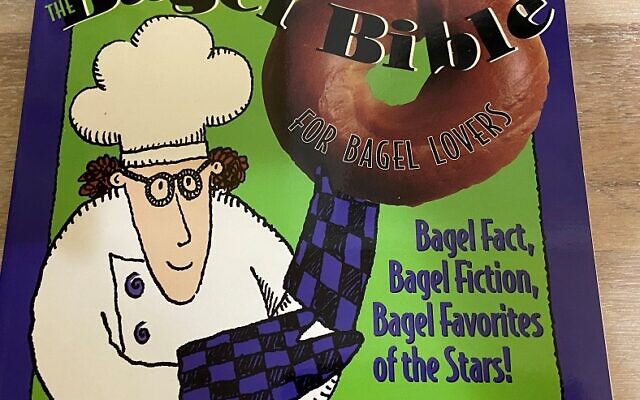What’s Jewish About … Bagels?
Marilyn Bagel is the author of multiple editions of “The Bagel Bible: For Bagel Lovers, the Complete Guide to Great Noshing" and one of the leading authorities on the history of the beloved bagel.
Robyn Spizman Gerson is a New York Times best-selling author of many books, including “When Words Matter Most.” She is also a communications professional and well-known media personality, having appeared often locally on “Atlanta and Company” and nationally on NBC’s “Today” show. For more information go to www.robynspizman.com.

In search of the Jewish history of the bagel, I met writer Marilyn Bagel, who also married a man named Bagel. It was only a matter of time before this bagel devotee wrote a book about her namesake. Bagel is the author of multiple editions of “The Bagel Bible: For Bagel Lovers, the Complete Guide to Great Noshing” (The Globe Pequot Press) and one of the leading authorities on the history of the beloved bagel.
Marilyn, what’s Jewish about a bagel?
Legend has it that in 1683 in Vienna, Austria, a local Jewish baker wanted to thank the King of Poland, Jan Sobieski, for protecting his countrymen from Turkish invaders. He made a special hard roll in the shape of a riding stirrup, commemorating the king’s favorite pastime and giving bagels their distinctive shape. It is also said there was an ancient Egyptian High Court member by the name of Bhagelramesis, who liked unsweetened donuts so much he was buried with them.
How did the bagel get its hole and when did it arrive in North America?
Another story about the bagel’s history is a baker from Crete named Bagelus, who tried to cure his gout by wrapping dough around his toes and sitting in the sun, producing “toe ring rolls” that eventually bore his name. Not a very appetizing thought. Regardless, bagels gained popularity in Poland, where they were officially sanctioned as gifts for women in childbirth and mentioned in community registers. What distinguishes bagels from other breads is that they are boiled before they are baked, contributing to their chewy texture. When the Eastern European Jewish immigrants arrived in North America at the turn of the century, they brought bagels with them. Many settled in Canada, giving cities like Toronto and Montreal their reputation for having great bagels.

How did the bagel work its way into popularity?
The American bagel industry established formal roots in New York between 1910 and 1915 with the formation of Bagel Bakers Local #338. This exclusive group of 300 craftsmen with “bagels in their blood” limited membership to sons of members. Back then it was probably easier to get into medical school than to get an apprenticeship in one of the 36 union bagel shops in New York City and New Jersey.
Who invented the bagel machine and why?
Bagel-making machines, a boon to commercial bakers who wanted increased production over hand-formed bagels, were introduced in the early 1960s. Inventor Dan Thompson of The Thompson Bagel Machine Corporation created the first viable model. The machines form bagels by extruding the dough through a ring shape. Dan’s father had previously worked on it, but his model was too complicated, too slow, and too costly to manufacture. A major development in making bagels more readily available nationally took place when Lender’s introduced frozen bagels, selling packaged bagels in grocery stores and, in the process, becoming the world’s biggest bagel producer.
What is the origin of the word “shmear” as it applies to bagels?
The word “shmear,” which has Yiddish origins, is often associated with bagels and refers to the act of spreading cream cheese on them. Today’s “shmears” are highly creative, and can include anything you can think of, from spices and herbs, capers, peppers, pickles, minced garlic and onions to fresh fruit.
Can you share any stories about celebrities and their love of bagels?
Ever since I wrote my first bagel book, I began calling bagels the “teddy bear of foods,” because they elicit an emotional reaction. Designer Diane Von Furstenberg first started eating bagels when she was a child. Noted psychologist Dr. Joyce Brothers first ate bagels as an infant and says they are the best teething rings ever devised. Famed criminal lawyer Alan Dershowitz says he’d rather try a garlic bagel than a court case. Hal Prince shared that though he was not a bagel devotee, he suggested if I ever changed my name to Blueberry Muffin and do a follow up book, he would be glad to oblige!
- What's Jewish About
- Bagels
- Robyn Spizman Gerson
- Marilyn Bagel
- The Bagel Bible: For Bagel Lovers
- the Complete Guide to Great Noshing
- Globe Pequot Press
- Vienna
- King of Poland
- Jan Sobieski
- Egyptian High Court
- Bhagelramesis
- Bagelus
- immigrants
- Bagel Bakers Local #338.
- New York
- The Thompson Bagel Machine Corporation
- shmear
- Designer
- Diane Von Furstenberg
- Dr. Joyce Brothers
- Alan Dershowitz
- Blueberry Muffin



comments